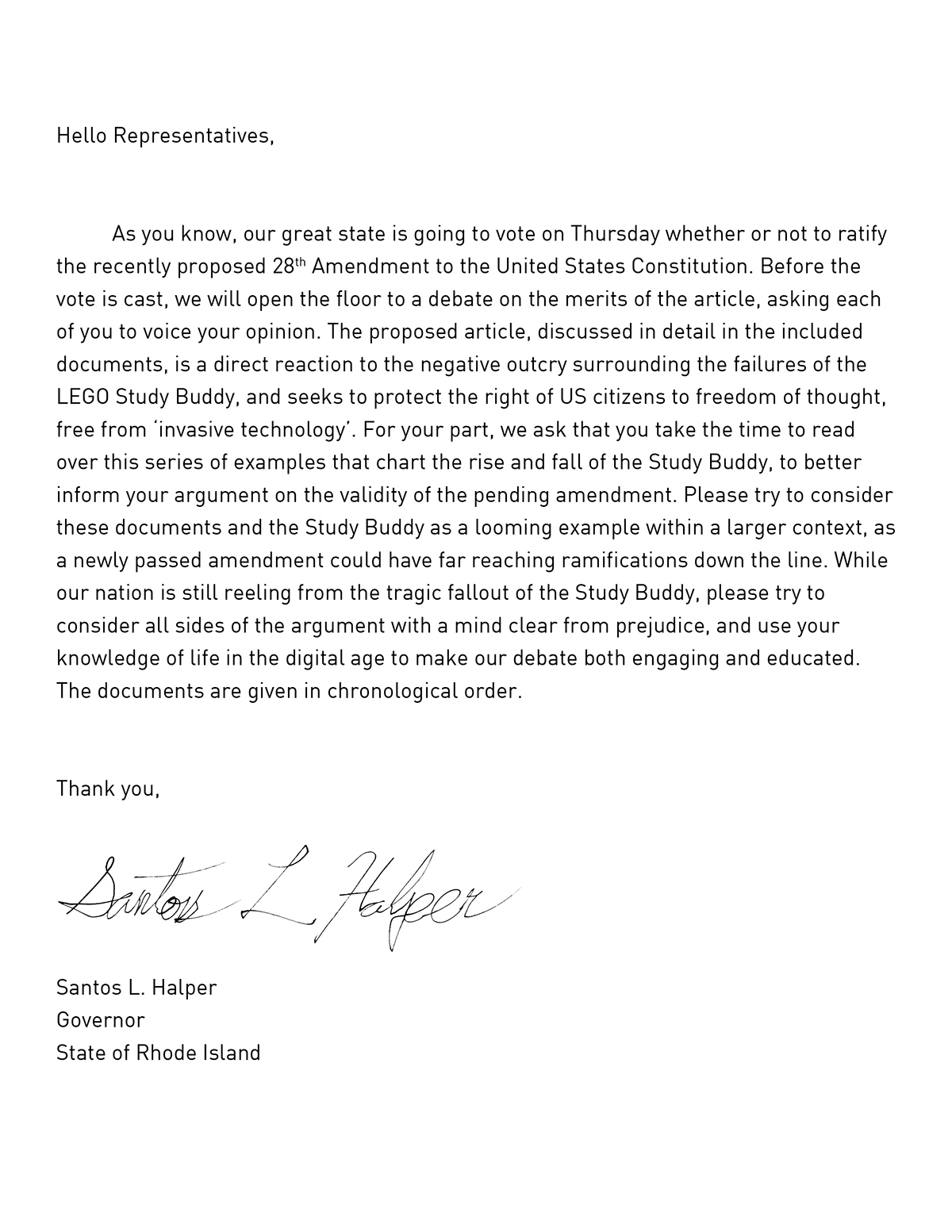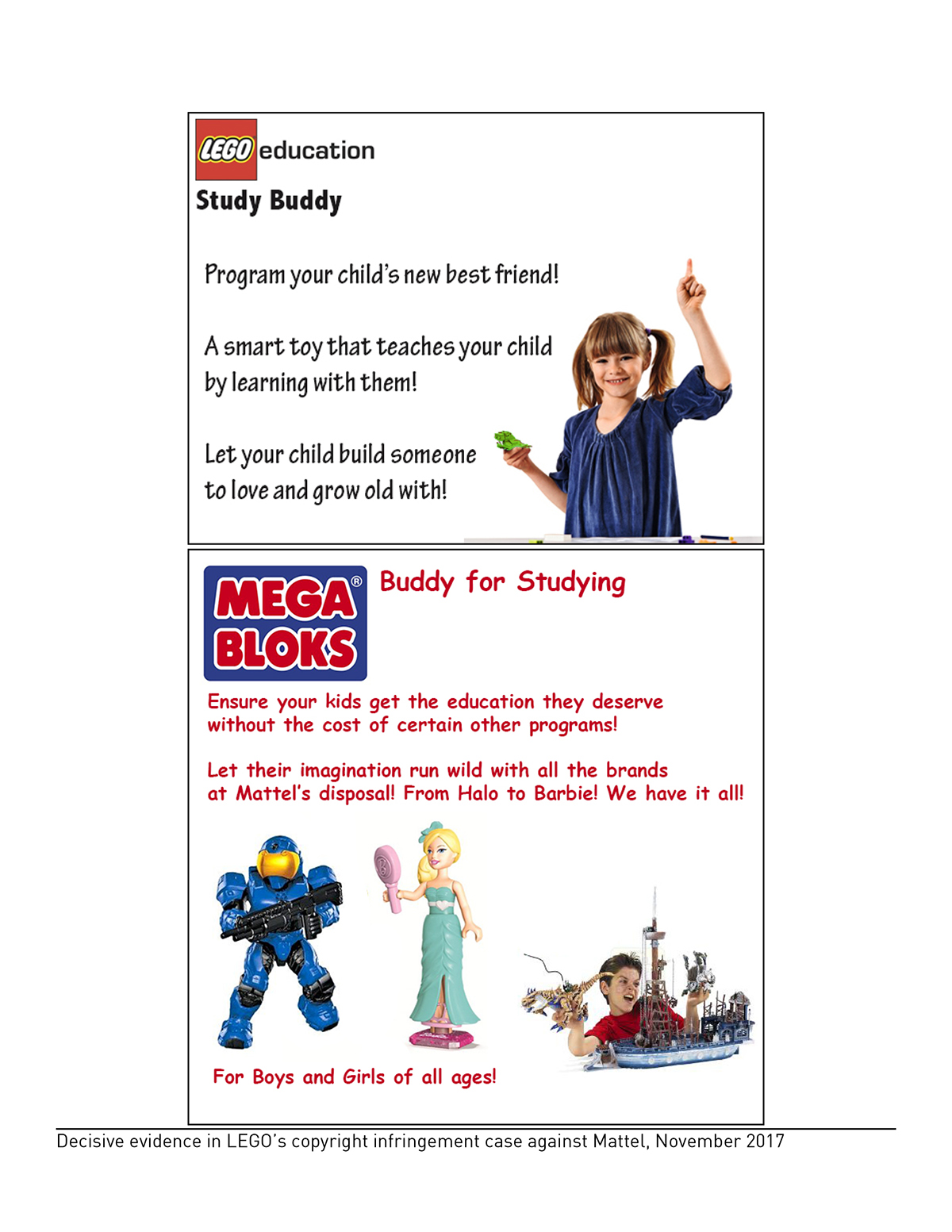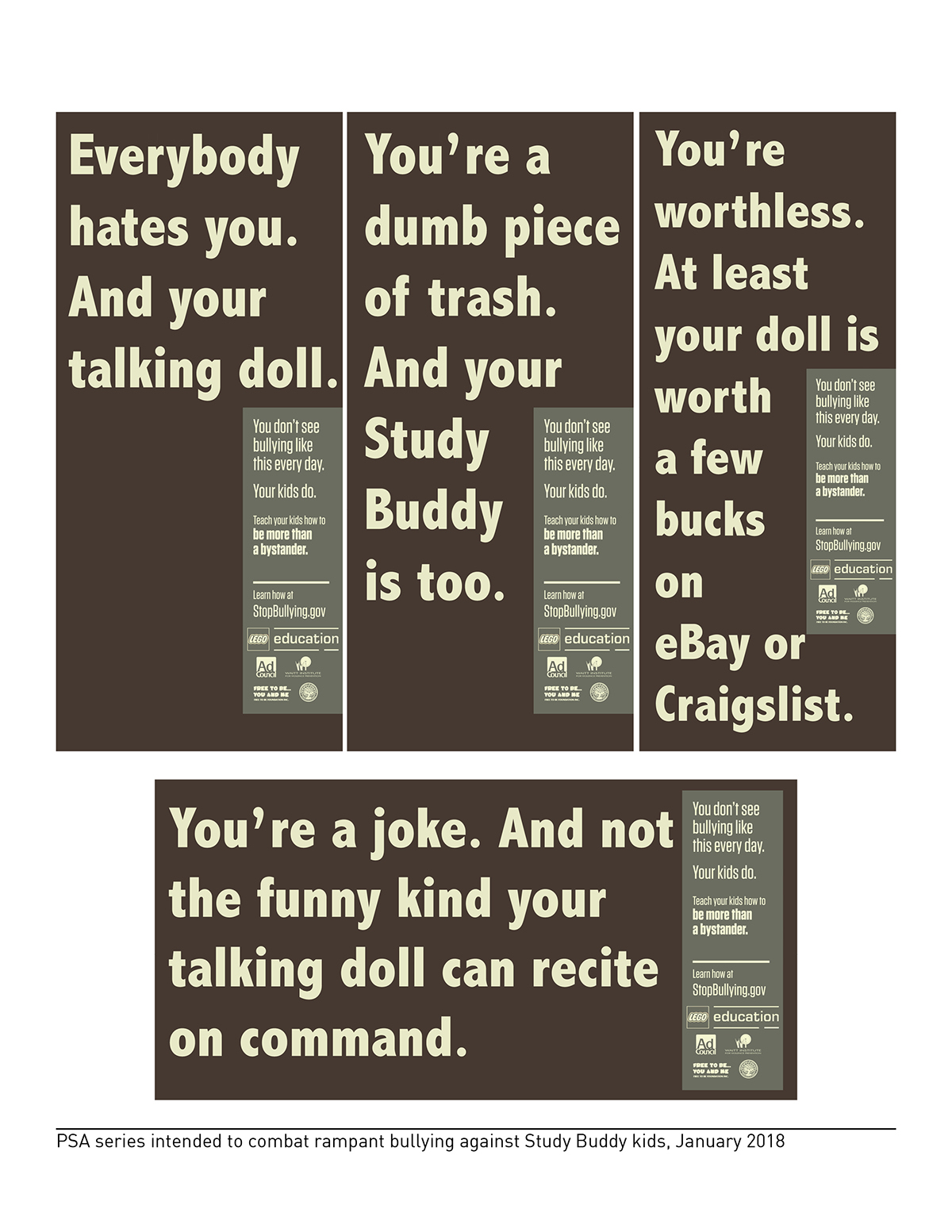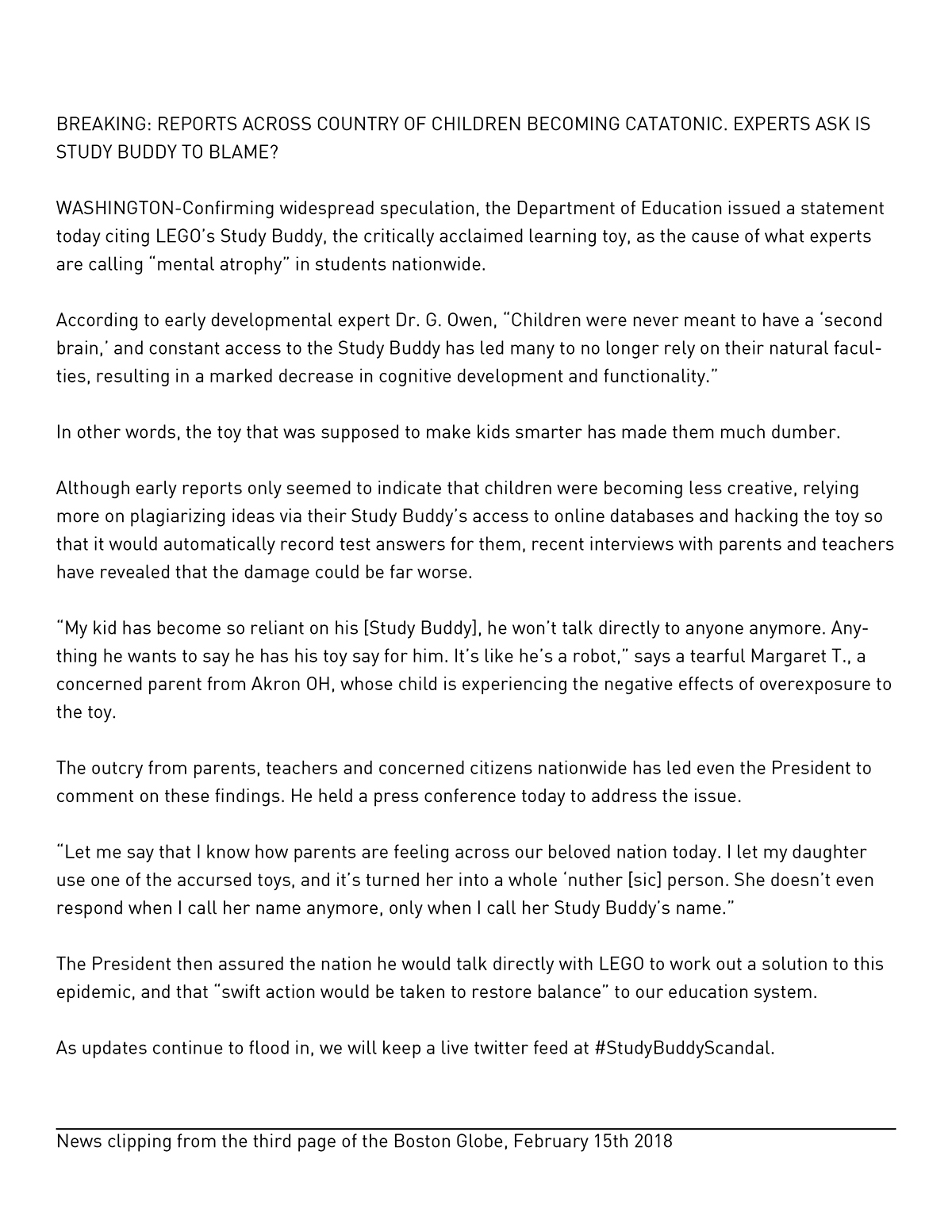In collaboration with designers at LEGO Education, we were tasked with exploring the rise of transmedia design (i.e. the intersection of digital and analog means) as it applied to education, contextualizing it within the tenants of constructivist learning theory, which emphasizes the importance of play in a child's healthy development, to design a newer and better future.
But just as the Inferno is more interesting than Paradiso, I decided to explore how the intersection of digital, analog, play and constructivist learning could go horribly horribly horribly horribly horribly horribly wrong.
To do this, I developed a conceptual scenario set in the near future that centered around a toy called the LEGO Study Buddy™, which at first is a huge success, but soon leads to dire consequences.
The logic of my scenario was based on my research into constructivist learning as it applied to digital natives (i.e. children who grew up with the internet), current trends in educational design, and applied it all to the medium of LEGO's own product lines, such as the Mindstorms sets.
This culminated in a lively mock debate, where my classmates, teachers, critics, and designers from LEGO Education took sides while I moderated. I prepared documents for the debate to provide context, but otherwise they were free to take any stance they liked. Below are excerpts from the debate package.



To project the Study Buddy scenario into reality, I created artifacts of its existence, starting with advertisements touting its ability to change the way kids learn.

Its success was then documented in newspapers across the country.

But what exactly is the Study Buddy???
The Study Buddy is an educational toy of protean nature. Children are encouraged to build themselves a best friend, including a minimum number of pieces that allow the toy to interact with advanced artificial intelligence.
I kept the actual mechanics of the toy enigmatic so that it could stand as a metaphor for any future bad designs. Otherwise people might have gotten preoccupied trying to fix a toy that does not exist.

And just like real life, every successful design is followed by imitators. In the Study Buddy's case, the courts ruled in favor of it, giving LEGO an essential monopoly on educational design.

Early concerns for the toy were silenced with a landmark ruling in favor of its integration into education, causing its sales to skyrocket.

But kids can be cruel, leading to bullies targeting users of the educational toy across the nation. A huge PSA campaign helped reign in the trouble, along with more and more kids receiving the learning toy.

The toy hit rock bottom though, when it was revealed that prolonged exposure to externalized knowledge led children to develop "mental atrophy."

After months of protests and rioting, Congress worked together to take action, for once.

With the proposed amendment on the table, the states then had to decide if it goes too far or if it doesn't go too far enough.
Those present at the critique/debate took sides ranging from concerned businessmen to Study Buddy rights advocates, and it ended in a heated deadlock.
It seems that the tiebreaker will have to be.......

You!
Get involved!
Disclaimer: This is a conceptual design scenario, not intended for practical application (in fact, that's the whole point) and any copyrighted material is used to add a sense of realism to the satirical logic of this, and nothing more.


